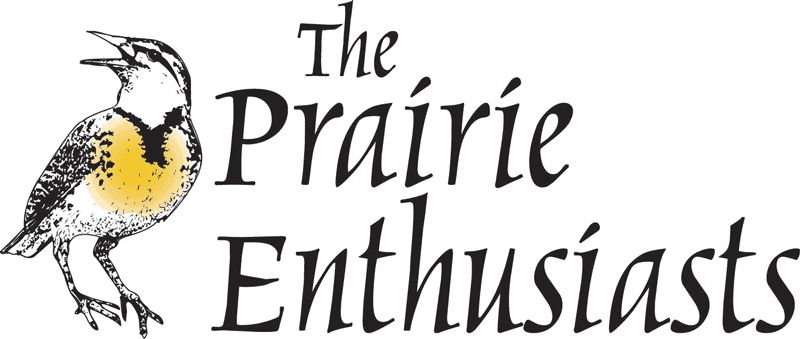Eliminating Buckthorn Without the Use of Herbicide
Story and Photos by Ron Rigden
October 2, 2023
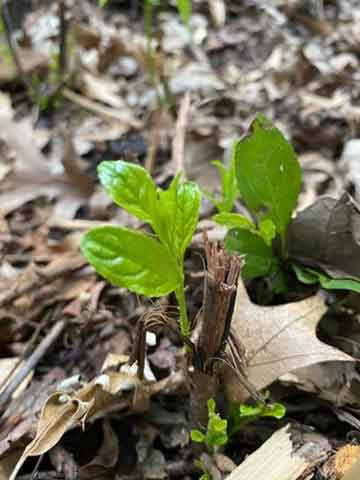
Typical regrowth of buckthorn
Buckthorn is an invasive shrub that has infested many of the forests and bluff prairies of the Upper Midwest, including Hixon Forest in La Crosse where our Coulee Region Chapter has been working to control it. It is known that cutting buckthorn without treating the stump with an herbicide causes it to resprout. It is not known how frequently or how long buckthorn must be cut before it doesn’t resprout, or if it is even feasible to kill buckthorn by just repeatedly cutting it. Friends of the Blufflands has partnered with our chapter to help answer this question by sectioning off an area in Hixon Forest with heavy growth of relatively small buckthorn plants and cutting parts of that area at different frequencies. We hope to be able to determine the minimal frequency that young buckthorn needs to be cut to eliminate it without the use of herbicide.
Hypothesis
If young buckthorn is repeatedly cut it will eventually not resprout. The minimal frequency after mid-June until the first hard frost at which this cutting must take place is unknown.
Methods
A 400-square-foot study plot was chosen for its uniformity of buckthorn growth. The buckthorn was about waist to shoulder high with the diameter of stems mostly about half to three-quarter inch or smaller. This area was cut close to the ground on June 16 with a handheld brush cutter. The cut stems were gathered and removed from the area, then a second pass was made with the brush cutter to assure that all the stems were cut. The plot was marked off and divided into four sections, each measuring 10 by 10 feet. These sections go up the slope from bottom to top. The four sections were cut at four different frequencies (every 2 weeks, 4 weeks, 6 weeks, and 8 weeks). A border was also cut around this 400-square-foot plot. The nearby uncut buckthorn was used as a control. Subsequent cuttings were done from that date until the first hard frost, which occurred on October 25, 2022. It is recognized that new seedlings from the seed bank would appear and must be taken into consideration.
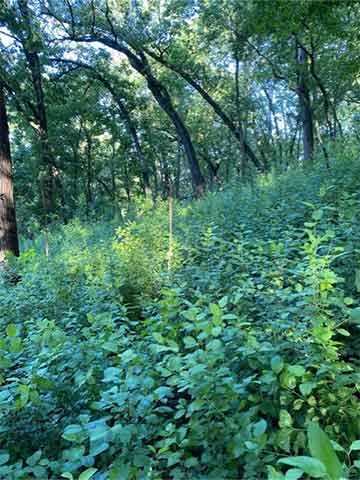
Area before cutting
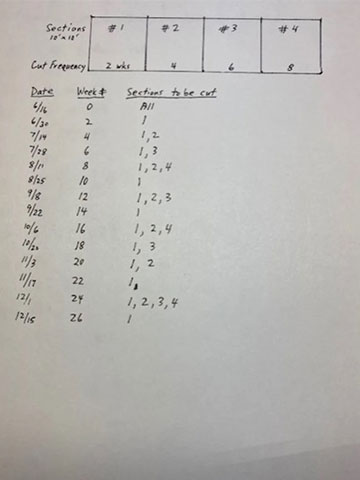
Cutting schedule (though the actual cutting took place near these dates due to weather or other factors)
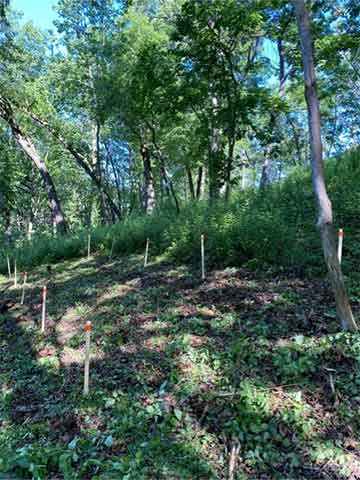
10 x 10 feet sections marked off after cutting
On 6/16/2022 a 15 x 50 feet section on Lookout savanna, well east of an area that had been foliar sprayed the previous year and easily accessible from Savanna Trail in Hixon Forest, was chosen for its uniform growth of common buckthorn. The buckthorn was about waist to shoulder tall with the diameter of stems mostly about 0.5 to 0.75 inch or smaller. There were minimal other woody plants present, such as honeysuckle or oriental bittersweet. This area was cut with a weed wacker with a blade close to the ground, the cut stems were gathered and removed from the area, then a second pass was made with the weed wacker to assure that all the stems were cut. Then four side-by-side 10 x 10 feet areas were staked out within this 15 x 50 foot area. Down the slope and separated from the 15 x 50 area by a 3-4 foot cut buffer, a second 10 x 10 area had all the woody plants removed with the traditional cut and treat method using hand held pruners and 20% triclopyr in bark oil with surfactant and blue dye.
Study Plots Two Weeks Later on 6/30
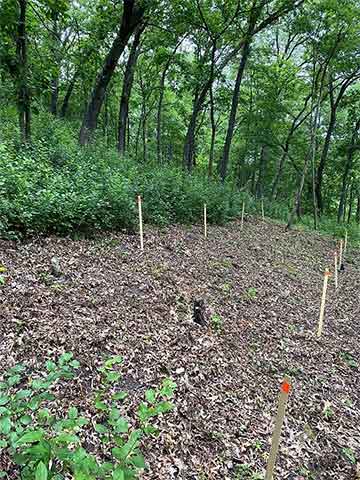
The cuttings proceeded through the year according to the schedule with the last cutting of sections 1 and 3 taking place on 10/25/22 after which a hard frost occurred. Here are the measurements of growth in the 4 sections on this date:
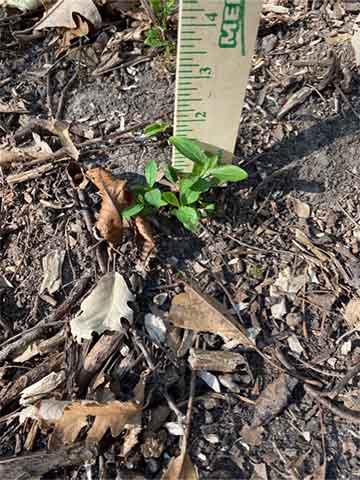
Section 1
Top 5 averaged 1.5 inches of regrowh
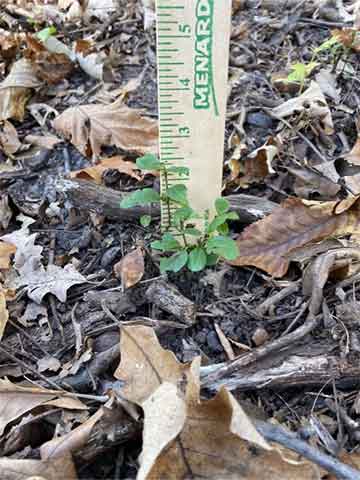
Section 2
Top 5 averaged 2 inches of regrowth.
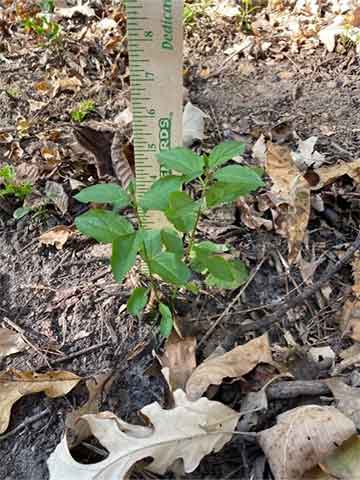
Section 3
Top 5 averaged 4 inches of regrowth.
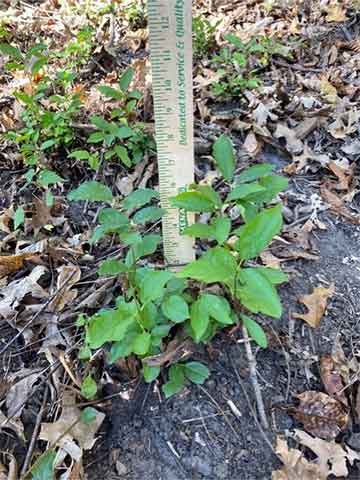
Section 4
Top 5 averaged 5 inches of regrowth.
Status through the Winter
Photos taken on June 6, 2023
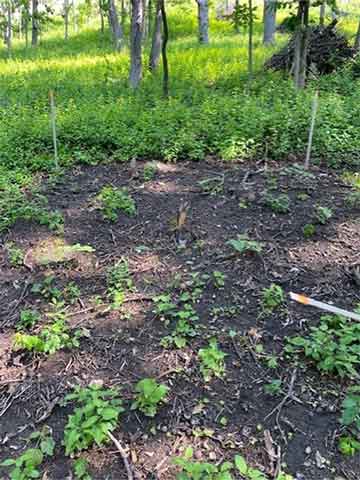
Section 1
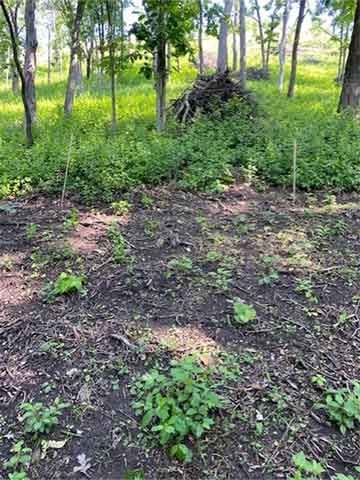
Section 2
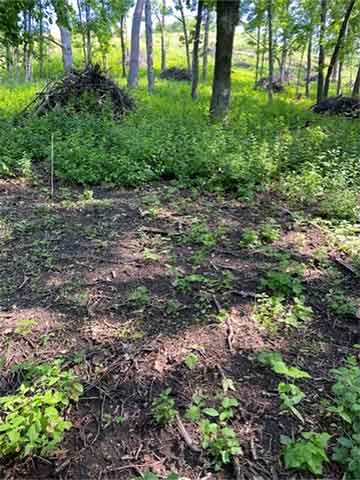
Section 3
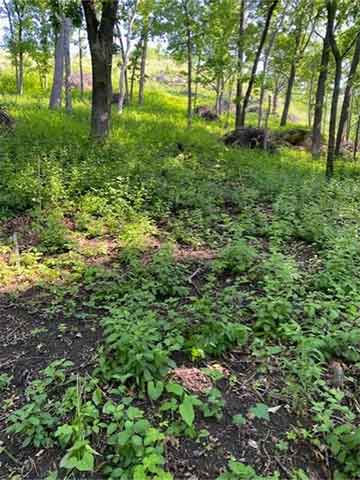
Section 4
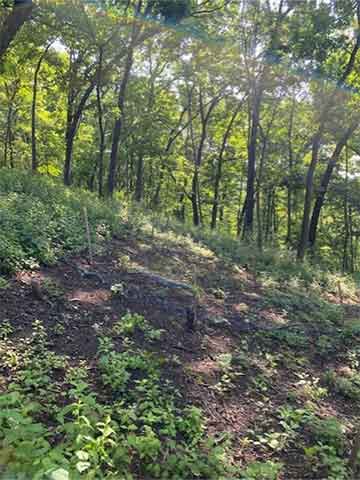
A view of the entire plot looking east
Conclusion:
If you’re interested in partaking in management research like this, send us a message!
